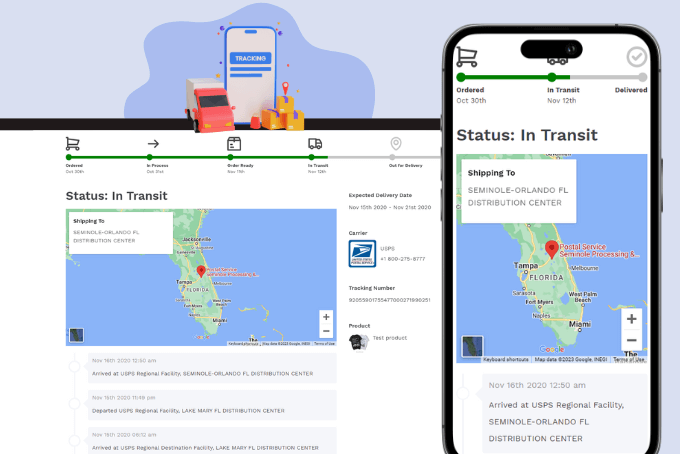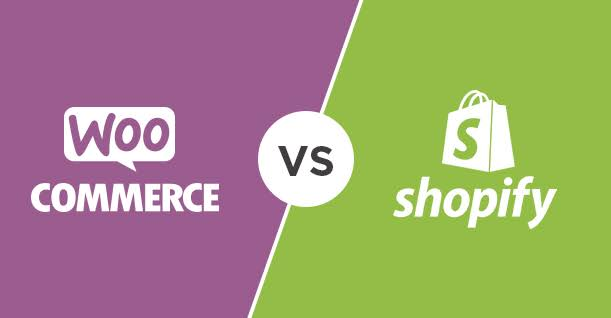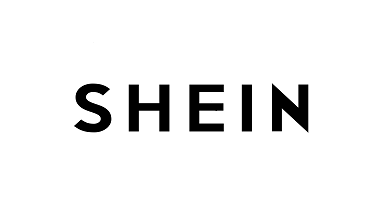Top 10 Redo Alternatives & Competitors to Retain Revenue

Are you tired of losing your hard-earned revenue because of Shopify returns? Maybe you want to offer better return experiences or exchange options?
Redo is great for startups with its free return portal and covered costs for return labels, but many merchants look for alternatives because of its US-only and limited features.
In this article, we'll share with you ten (tried and tested) Redo alternatives. We selected them based on the useful features they provide and their ability to help you retain revenue and increase profits, even during the return process.
5 Factors to Consider in a Redo Alternative
When choosing Redo alternatives, you can consider these five factors: Pricing, features, integration, scalability, and customer support.
Remember that the goal is simple: It's to find tools that match your current needs and stage... at a controllable (or an affordable) cost.
1. Pricing That Fits Your Budget
Is it more affordable than Redo and fits your usage? Redo's free plan is tempting if you're new to returns management or the ecommerce space. But free often means strict limits on return volume or missing features.
There are other platforms that offer volume-based tiered pricing or flexible plans that can meet your return volume. They usually provide better features like easy product exchanges, store credit options, return cost reduction, and better customer support.
PRO-TIP: Go for a tool that provides transparent pricing. You want to know exactly what you'll pay each month for the features you'll get with no surprises (save yourself from hidden fees!)
2. Core Return Features You Actually Need
Some of the must-have features you should look for include major carrier integration, automation tools, and return options:
- Major carrier support: A good platform connects with carriers like USPS, DHL, and UPS so merchants can meet customer expectations for flexible return methods.
- Return automation: Having the option to auto-approve returns, generate labels instantly, and process refunds automatically saves your team tons of time (and frees you from the usual "human errors").
- Flexible return options: It's also great to be able to offer exchanges and store credits besides the traditional refunds to keep more revenue.
3. Integration With Your Current Setup
Will this return management platform connect well with your current tech stack? It's 2025, and choosing a platform with poor integration can affect your team's productivity and customer experience by A LOT.
Here are some of the common integration requirements you should check:
- Multi-platform availability: Check which ecommerce platforms the app supports. Make sure that it works with your current platform (whether you’re using Shopify, WooCommerce, BigCommerce, or Magento). If you’re a Shopify merchant, look for apps with "Built for Shopify" certification for quality integration.
- Customer service tools: Integrations with helpdesk software like Gorgias, Zendesk, Tidio, etc., are important so you can handle support tickets without any issues.
- Marketing apps: It should also work with email tools like Klaviyo and review apps like Yotpo so you can send return follow-ups and track customer feedback (for improvement).
4. Room for Business Growth
Scalability should also be in your checklist. Your alternative should be consistent throughout (whether you're handling 1,100 or 1,000 returns per month). An alternative that offers plans for both SMBs and large enterprises can guarantee you won't outgrow the platform or have to switch mid-growth.
You also want the ability to add new shipping carriers and upgrade features as you expand to different regions. Since Redo focuses mainly on the US market, make sure your alternative works well in Europe, Asia, or wherever you plan to sell next.
5. Customer Support You Can Rely On
Returns can get complicated quickly, even when using a return management platform. Look for app providers that offer strong customer and technical support to help you deal with complaints, like when a shipment is delayed, the return label isn’t working, or when customers don’t see any updates.
The best ones provide 24/7 live support through chat or email, plus clear documentation and video walkthroughs for common issues. Fast ticket response times during peak periods can also save your business when return volumes spike and systems get overwhelmed.
Top 10 Redo Alternatives and Competitors
The following alternatives offer different strengths in return management, carrier integrations, and advanced features that work for your goals, budget, and needs. Let's look at each of them:
#1 ParcelPanel Returns & Exchanges

ParcelPanel Returns & Exchanges is a flexible return management app. It's especially built for Shopify stores (so integration won't be an issue), and it offers more useful features to manage your returns than what you get from Redo.
ParcelPanel helps keep more money in your pocket through multiple exchange options. You also get detailed analytics about your returns.
We all know how important carrier integration is when it comes to returns. ParcelPanel supports direct integration with 17+ carriers for return label generation. The platform works through a well-built return management dashboard where you can handle all requests.
Plus, your customers can initiate their own return process with the self-serve portal. That's less work on your team, but better customer experience and more flexible return methods.
Carriers: Works with 17+ carriers, including USPS, DHL, UPS, and FedEx, for creating return labels. But you can request additional carriers through form submission.
Key Features:
- Revenue-Retaining Exchanges: Let shoppers swap for a different size, pay the difference for higher-value items, or receive store credit on lower-priced ones. You can keep more sales with these options and don't need to push refunds... all the time.
- Return Protection: Offer your customers optional return protection at checkout. This covers return shipping costs when they actually need to send items back. Plus, it saves you from possible expenses.
- Cutomized Workflows: Set rules to auto-approve returns based on spend, value, or reason, and process exchanges or refunds as soon as items are received. With automation, you can be more efficient and effective in handling high volumes of requests.
- Multi-Language Return Portal: Provide a branded self-service page in 16 languages, where shoppers (who love doing things on their own) can log their return reasons and complete their requests.
- Returns Analytics Dashboard: Track which products get returned most often, why customers send items back, and how much revenue you’ve saved through exchanges. These insights make it easier to refine your policies and product choices based on your customers' several actions.
Pros:
✅ Easy-to-use interface
✅ Provides more affordable pricing plans than some Redo alternatives
✅ Offers convenient (and flexible) return methods like QR code returns, pickup services, and self-shipping options.
✅ Provides a plug-and-play app for Shopify users
✅ Safe, secure, and reliable platform thanks to ISO 27001 certification, GDPR compliance, and 99.99% uptime
Cons:
❌ Limited free plan (only six returns/month)
❌ Only works with Shopify and not other major ecommerce platforms
Best for: Small to medium-sized Shopify stores and DTC brands that process 100+ returns per month.
Integrated with: Shopify and Shopify Plus
Pricing: ParcelPanel Returns & Exchanges provides credit-based tiered pricing starting at $20/month (plus a 7-day free trial).
Try the ParcelPanel Returns & Exchanges app for free.
#2 ClickPost Returns Plus

ClickPost Returns Plus offers hassle-free return management for you and your customers. Your team will get an all-in-one dashboard where you can track requests, set policies, and check any patterns. On your customer's side, they get a branded portal where they can initiate and track their returns.
Carriers: 400+
Key Features
- Branded Self-Service Portal: Your customers can start and track their returns through a portal that feels like part of your store. It keeps the process simple for them and reduces the never-ending email exchange with your team.
- Automated Approval and Refund Workflows: Set rules for approvals and refunds so routine requests get handled right away. This automation can help you a lot... especially during peak seasons.
- Real-Time Updates and Notifications: Customers can know what's happening to their returns (refunds and exchanges) with automatic emails and status updates.
- Return Analytics Dashboard: Track return reasons, product trends, and refund patterns in one place. With that visibility, you can spot issues early and adjust your policies or product details.
Pros:
✅ Easy to set up and customize
✅ Free plan available for up to 100 returns per month
✅ Allows single or multiple returns per order
Cons:
❌ No option to add notes when approving or declining return requests
❌ Limited customization and integration
Best for: Medium-sized stores that handle more than 100+ returns and need a more comprehensive return dashboard.
Integrates with: Shopify
Pricing: ClickPost also uses a quota-based tiered pricing model. Its paid plans start at $49/month for up to 225 returns, but you can get started with a free plan.
#3 Loop Returns

The third one on our list is Loop Returns. This returns automation platform is known for providing incentives and optimizing the exchange process, so customers will choose swap or store credit over refunds. It also supports warranty claims and in-store returns for a better post-purchase experience.
Carriers: 21
Key Features
- Exchanges and Store Credits: Offer incentives through bonus credits, and shop now or shop later options that nudge customers toward exchanges or future purchases.
- Point of Sale Returns: Connect online and offline returns so customers can drop items in-store. That allows you to save shipping costs and drive more foot traffic.
- Fraud Prevention Workflows: Set rules and blocklists to reduce risky returns while keeping the process smooth for loyal shoppers.
Pros
✅ Integrates well with plenty of Shopify apps and Shopify POS
✅ Offers accurate delivery estimates to your customers
✅ Protects your business from online attacks by complying with data protection and privacy laws
Cons
❌ Higher cost compared to some other return apps (it's not the best for smaller businesses).
❌ Only works for Shopify.
Best for: Mid-to-large Shopify stores that process high monthly return volumes and want to keep their sales with better exchange options.
Integrates with: Shopify, Klaviyo, Gorgias, and Rise.ai.
Pricing: Loop Returns uses a subscription-based pricing model. Paid plans start at $155/month, and it doesn't offer any free trials.
See more Loop Return alternatives.
#4 Return Prime: Return → Revenue

Return Prime is great for handling returns more efficiently. It automates approvals, exchanges, and refunds while offering your customers simple options like store credits or upsells.
With flexible rules and logistics integrations, you can build a smoother process that supports growth (without draining your resources).
Carriers: 11
Key Features
- Wonder Revenue Booster: Show your customers relevant products during the return process and add upsell options to get some extra sales.
- Wonder Promotions: Offer store credits instead of refunds and add small incentives to keep revenue in your store.
- Wonder Smart Exchanges: Make it easy for shoppers to exchange items with discounts or suggestions for similar products. This reduces refunds and keeps your customers engaged with your brand.
- Wonder Bot Automation: Save time by setting rules to auto-approve requests, process refunds, and trigger exchanges.
Pros:
✅ It's great for cross-border returns & exchanges.
✅ Connects with 100+ software platforms and logistics
✅ Offers a 15-day free trial
Cons:
❌ Free plan is limited to 5 returns/month
❌ Doesn't offer return fraud protection
Best for: Growth-stage D2C brands that want to manage 60–450 returns per month and need a revenue-conscious system.
Integrates with: Shopify, Zapier, Klaviyo, Yotpo, and Richpanel
Pricing: Return Prime also offers a quota-based tiered model. It offers a free plan and its paid plans start at $19.99/month for 60 returns.
#5 AfterShip Returns Center

Like Loop Returns, AfterShip Returns also focuses on encouraging exchanges and store credits instead of refunds. Plus, it cuts costs with automation, global carrier support, and flexible drop-off options.
Carriers: 44
Key Features
- Branded Returns Page: Give your customers a self-service page on your store where they can request returns, exchanges, or even gift returns.
- Returns Status Notifications: Keep shoppers updated at every step of their return process with automated messages... and in their preferred language.
- Shipment Tracking for Returns: Monitor return shipments directly inside AfterShip. You’ll see delays or exceptions right away, so you can act quickly and keep the process moving.
- Returns API and Webhooks: Easily sync data by connecting AfterShip with the other systems you already use, like your warehouse or order management tools.
Pros:
✅ Provides 310,000+ returns drop-off locations
✅ Connects with a lot of major ecommerce platforms
✅ Supports over 70+ integrations
Cons:
❌ App can get really expensive as your return volume increases
❌ The interface and setup aren't as beginner-friendly as other alternatives
Best for: Growing brands that want to retain more revenue and also manage over 200+ monthly orders easily with automation.
Integrates with: Shopify, Salesforce, Magento, BigCommerce, Klaviyo, Attentive, Gorgias, and Yotpo
Pricing: AfterShip provides a quota-based tiered pricing, and it starts at $23/month for 60 returns/month. It also offers a limited free plan (3 returns/month) that you can try.
See more AfterShip alternatives .
#6 Happy Returns

Happy Returns, owned by UPS and Shopify Plus Certified, is built to make the return process less of a burden for merchants. Your customers can get a simpler (and more secure) drop-off experience. And with that, you benefit from faster restocking, fewer customer complaints, and better fraud prevention.
Carriers: 5
Key Features
- Return Bar Network: Provides over 8,000 locations where your shoppers can return items without packaging or labels.
- Buy Online, Return In-Store (BORIS): Accept online purchases at your physical store for a true omnichannel experience.
- Fraud & Loss Defense: Prevents scams and fake return claims through in-person checks at drop-off locations.
Pros
✅ Access to a nationwide drop-off network backed by UPS
✅ Well-suited for merchants who want to combine online and in-store returns
✅ Returns are consolidated, which makes warehouse operations more efficient.
Cons
❌ Pricing isn’t public and often requires direct contact with sales.
❌ Carrier integration is very limited.
Best for: Shopify stores, DTC brands, and retailers that run both online and brick-and-mortar shops looking to provide omnichannel returns.
Integrated with: Shopify, parcelLab, Loop, and Gorgias
Pricing: No public plans available, but Capterra mentioned a flat-rate model starting at around $500/month. We still suggest directly contacting Happy Returns for the accurate amount.
#7 ReturnGO Returns

We added ReturnGO Returns to this Redo alternative's list because of its flexibility. It’s a great option if you want to offer more advanced return rules. For example, you can set different policies by product type, promotion, or customer group. You won't have to fit every return in one process (which is inefficient, by the way.)
Carriers: 50+
Key Features
- Branded Self-Service Portal: You can embed a return portal directly into your store so your customers can start exchanges or refunds on their own (and without leaving your site).
- Flexible Policy Rules and Automation: Set return rules by product type, promotion, or customer segment, then let automation handle approvals, exchanges, and refunds for faster processing.
- Revenue-Friendly Alternatives: Ditch the usual refund-only flow and give your customers more fun options by offering store credit, eco-friendly shipping, or donation options.
Pros
✅ Flexible return rules for a more customized process
✅ Allows you to process unlimited returns with the free plan
✅ Responsive support team
Cons
❌ Setup can feel complex for merchants
❌ No option to blacklist specific products from appearing in the return and exchange portal.
Best for: Growth-stage DTC and mid-to-large Shopify stores handling 2,000–5,000+ returns per year with complex policy and exchange needs.
Integrated with: Shopify, Shopify Plus, Magento 2, Salesforce Commerce, Klaviyo, Yotpo, and Rise.ai
Pricing: ReturnGO has a quota-based tiered model that starts at $23/month (for up to 20 returns). It also offers a 14-day free trial.
#8 Corso Returns and Exchanges

Corso Returns and Exchanges makes it possible to offer customer-paid return options, streamline exchanges, and guide shoppers through a branded portal that keeps them on your site.
Carriers: No direct carrier integration (partners with shipping software Vesyl).
Key Features
- Integrated Customer Portal: Corso embeds a branded portal on your site where customers can handle tracking, shipping issues, returns, and even warranties in one place.
- Custom Fields & Eligibility Rules: Add your own questions during the return process to gather the details that matter most to your brand. That extra context helps you enforce policies fairly and avoid unnecessary disputes.
- AI-Powered Analytics: Ask questions about your return data and get instant answers. You can quickly see patterns and adjust products or policies with confidence.
Pros
✅ Offers onboarding support
✅ Easy setup with Shopify
✅ Provides more post-purchase features like order tracking, shipping protection, and warranty claims
Cons
❌ Limited direct carrier integrations
❌ Advanced setup may feel like overkill for small stores
Best for: Medium-to-large-sized Shopify brands with high return volumes that want a more flexible return system.
Integrated with: Shopify, BigCommerce, Gorgias, Rebuy, and Gladly.
Pricing: Corso offers performance-based pricing with no fixed contracts. You only pay a percentage of the revenue you generate.
#9 Shipup Returns Management

Shipup Returns Management gives your customers a digital and straightforward way to send items back. They no longer need paper labels or confusing steps, since the process can be handled directly on your site.
Plus, every request appears in a single dashboard where you can track progress, review reasons, and analyze the return patterns.
Carriers: 110+
Key Features
- Branded Return Portal: Customers start and monitor their returns without leaving your site, creating a smoother experience while cutting down on support tickets.
- Centralized Return Dashboard: Manage every return in one place, search by order, and filter by product or reason so your team can focus on what matters most.
- Return Analytics: Spot your most returned products and common reasons behind them. These insights make it easier to adjust policies, update descriptions, or flag recurring product issues.
Pros
✅ Digital-first returns process (no more paper labels)
✅ Unified dashboard that keeps everything in one view.
✅ Branded tracking and notifications that encourage repurchase
Cons
❌ It's on the expensive side.
❌ Doesn't have a free trial
Best for: Mid-to-large ecommerce brands that want a more comprehensive post-purchase and marketing solution besides return management.
Integrated with: Shopify, Magento, WooCommerce, BigCommerce, Zendesk, Gorgias.
Pricing: Its tiered pricing starts at €299/month. But you need to sign up for the Advanced plan (at €599/month) to enjoy the return management feature.
#10 parcelLab Return and Exchange

parcelLab Return and Exchange is a part of the software's post-purchase platform that helps you turn returns into customer loyalty opportunities through AI-powered automation and personalized workflows.
Carriers: 550+
Key Features
- Return Volume Forecasting: Predicts return spikes based on sales data and seasonal patterns. It prevents warehouse issues during peak periods like Black Friday returns.
- Automated Workflow Management: Creates different return rules for VIP customers, seasonal items, or specific products so you can reduce manual decision-making for routine returns.
- Multi-Channel Return Processing: Allows your customers to return online orders in-store or use QR codes instead of printed labels (works well if you have a physical store).
- Advanced Return Analytics: Shows which products get returned the most and why customers send them back. Helps you identify sizing issues or product problems before ordering more inventory.
Pros
✅ Provides more features that help with customer experience
✅ Supports multi-carrier integration for merchants
✅ Offers premium pick-ups for high-value items
Cons
❌ Doesn't offer a Shopify app for returns management (only order tracking app is available)
❌ Non-transparent pricing
Best for: Large enterprise retailers and brands with high return volumes (1,000+ returns per month).
Integrated with: Shopify (tracking only), Salesforce, SAP, Magento, Kustomer, Happy Returns, and various warehouse management systems through API integrations.
Pricing: Custom enterprise pricing starting around €2,400 per month based on Capterra. But parcelLab doesn't publish official pricing on its website. There's also no free trial available.
Tips for Choosing the Right Redo Alternatives
One of the best tips we can offer you is matching your return volume to the platform's capabilities rather than the number of features. You won't need enterprise-level forecasting if you're processing 50 returns monthly, and basic automation won't survive peak seasons for high-volume brands.
If you need help picking the right alternative, here's a table that breaks down which solutions work best for different business types:
| Business Type | Recommended Solutions | Why It's a Good Fit | Pricing Model |
| Small businesses / Startups | ParcelPanel, Return Prime, ClickPost | Affordable entry points with exchange options, self-service portals, automation workflows, and multi-language support. | Free trials and pay-as-you-go options |
| Mid-sized eCommerce stores | ParcelPanel, ReturnGO, ClickPost, AfterShip | Branded portals, flexible policy rules, automated workflows, and detailed analytics that scale with order volume. | Tiered pricing |
| Large enterprises | Loop Returns, parcelLab, Happy Returns, ParcelPanel | Enterprise-grade features like POS returns, forecasting, fraud prevention, omnichannel processing, and global integrations. | Tiered and custom pricing |
| High return rate businesses | ParcelPanel, ReturnGO, ClickPost, Loop Returns | Unlimited return handling with fraud detection, automation rules, and analytics that identify return patterns. | Tiered and custom pricing |
| DTC brands | ParcelPanel, Return Prime, Happy Returns | Branded return portals, exchange incentives, and omnichannel experiences that strengthen loyalty during returns. | Monthly subscriptions with free trials |
| Cross-border eCommerce | ParcelPanel, ReturnGO, ClickPost, AfterShip | Multi-language support (16+ languages), international carrier integrations, and cross-border return capabilities | Tiered pricing with geographic flexibility |
| Multi-channel retailers | Happy Returns, parcelLab, Corso | Buy-online-return-in-store, branded drop-off networks, and unified customer portals for omnichannel return handling | Custom or performance-based pricing |
| Growth-stage brands | ParcelPanel, ReturnGO, Return Prime, Corso | Advanced policy customization by product type, revenue-friendly alternatives like credits or eco options, and performance-based pricing | Quota-based tiered pricing |
Final Words
So there you have it! Those are the ten solid alternatives to Redo that can handle your return management needs without the limitations.
Each platform offers different strengths depending on your business size, return volume, and budget.
Pick one that matches your current stage and start with their free trial to see how it works with your actual return flow. But we suggest you get started with ParcelPanel's Returns and Exchanges for free.
Redo Alternatives FAQs
Do these alternatives integrate well with Shopify / Shopify Plus?
Yes, most alternatives like ParcelPanel, ClickPost, ReturnGO, and Loop Returns work directly with Shopify and Shopify Plus. They sync with your order data automatically and update return statuses in your admin dashboard.
Can these alternatives handle international orders and returns?
Some alternatives handle international returns better than Redo. For example, ParcelPanel supports 16 languages and works with global carriers. AfterShip covers 1200+ carriers worldwide with multi-language notifications, and Return Prime works well for cross-border returns and exchanges.
Can these Redo alternatives protect my revenue and reduce losses from returns?
Many alternatives focus specifically on revenue retention through exchanges and store credits. ParcelPanel offers exchanges and store credits. Loop Returns provides exchange incentives and fraud prevention. ReturnGO offers store credit options and flexible refund policies.
What factors should you consider when searching for the right alternative to Redo?
It's important to consider your budget, integrations with your current tools, scalability, and the level of customer support you need. Plus, think about whether you need multi-language support, fraud protection, and advanced analytics based on your customer base and business type.










![Top 10 Route Alternatives & Competitors [2026]](https://blog.parcelpanel.com/wp-content/uploads/2025/11/Route-Altenatives.png)

![Top 10 parcelLab Alternatives & Competitors [2026]](https://blog.parcelpanel.com/wp-content/uploads/2025/11/AfterShip-Altenatives-9.png)
















